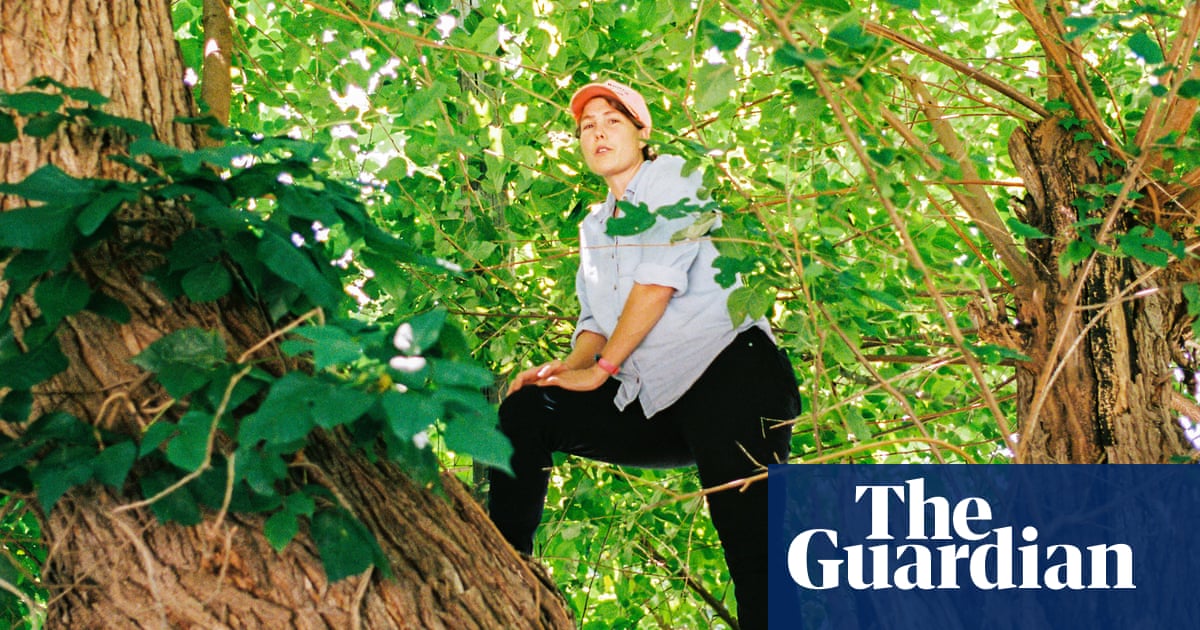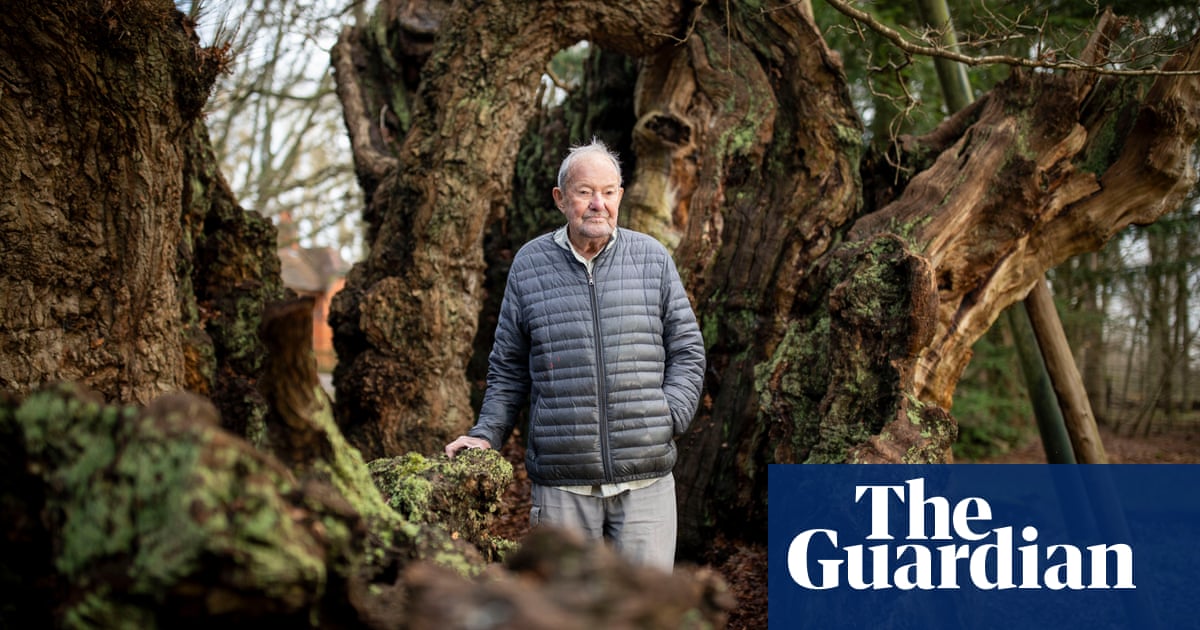
Eliza Greenman plucks a wrinkly, canoe-shaped leaf from a tree and cradles it in her hands before sliding it into a plastic freezer bag. She’s standing beneath a mulberry tree in a field on the banks of the Mattaponi River, a tributary that cuts through eastern Virginia to the Chesapeake Bay. Greenman had to sleuth to find this historical mulberry, which is meandering, ancient, studded with unripe, spiky white fruits, gnarled with English ivy and a distinctive wave pattern on its bark.
“It’s so cool to imagine that this field was potentially all just mulberries,” Greenman says, staring out at the shimmery rye across the road.
Greenman is a fruit explorer: a horticultural enthusiast who roams the United States searching for the last cultivars of old, rare or important plants. Throughout the centuries, the residents of North America – from Indigenous Americans to white botanists in the early 1900s – cultivated various fruit and nut trees. These trees’ last descendants now grow on remote farms, in forests, on state lands, tucked along roads. Fruit explorers’ mission is to track down those trees, test their quality and then graft them before their genetics are lost forever.
Buzz Ferver, a nursery owner and fruit explorer in northern Vermont, estimates that thousands of such explorers operate in the US, with about 20 in a “core group” who will drop anything to go anywhere and search for a fabled plant.
For some, it’s about history: learning about a majestic tree in the historical record and trekking off to the woods to find it. For others, it’s about taste. David Shields, an heirloom foods expert at the University of South Carolina, explained that our food system homogenized after the second world war and that many fruit explorers want to preserve old regional flavors before it’s too late. “People realize that they once had great things that reflected the taste of their place and that were marginalized by market forces,” Shields said. One example: “The limbertwig apples of the south, which have a wild winey flavor that once you’ve tasted it will haunt you.”
Then, there are the environmental reasons. Many fruit explorers reject the US’s current reliance on monocultural, seasonal agriculture, which means planting massive amounts of animal feed like soy and alfalfa in vast, deforested fields. These explorers want to replace that system with one of permaculture, which involves planting perennial fruit and nut trees instead.
“If we come to our senses and realize that planting 200m acres of corn with tillage is not a good idea from an ecology perspective, we’re going to need the best germplasm [genetic resources maintained for plant breeding] in existence,” said Ferver, who described himself as a “rabid” fruit explorer. “We’re going to need to keep that stuff alive so it’s there if we need it.”
Greenman shares this ecological mission. She’s currently a germplasm specialist at the Savanna Institute, an agroforestry nonprofit in the midwest, but she’s been fruit exploring since 2009. She started by apprenticing with an apple fruit explorer in Maine and she has searched for a panoply of trees, from persimmons to tannin-free oaks, which produce tastier acorns. Right now, she’s in her mulberry phase. She hopes that if she can find and propagate hardy, ancient mulberry trees, then this high-protein plant can replace alfalfa as animal feed.
Finding these trees tucked into the landscape requires detective work. Greenman’s hunt for the mulberry along the Mattaponi began in 2019, when she read a book about the history of silk cultivation in the US. She learned that an early Jamestown governor bought a swath of land off the Mattaponi River for mulberry growing, before selling it to the Walker family in the 1660s. Greenman immediately began researching Walkers in the area. Her research led her to a town called Walkerton and a Walker family who had lived on this land for 12 generations. Last winter, she called them and they invited her to visit. She drove down and found a single remaining mulberry.
America has a native mulberry plant – the red mulberry – but Greenman is hunting for white mulberries, which were imported from Spain during the years when the British hoped to make the south-east a hub for silk production. White mulberry leaves are 26% protein, which could be a boon for the animal feed industry. And this tree on the Walkers’ property is important because of its longevity.
“These are genetics that are clearly winning in terms of the resilience game,” Greenman said.
Greenman will take these leaves for testing to learn their protein content. If it’s high in protein, she’ll come back, cut a branch so she can graft the tree, and then talk with the Walkers about what they want to name their new cultivar. If the mulberries she’s hunted and grafted take off as a replacement crop for alfalfa, she plans to give a percentage of sales as reparations to the Indigenous populations that were displaced by these trees centuries ago.
Although Greenman is currently on the hunt for trees older than the US itself, many fruit explorers focus on the early 20th century, another golden age of fruit exploring. During this period, said Ferver, white botanists like the nut tree nursery owner John Hershey and the agroforestry enthusiast J Russell Smith traveled America preserving the best crops cultivated by Indigenous Americans before contact. Soon after, the Tennessee Valley Authority ran contests for the best versions of various trees, then shipped out the winners to nurseries and individuals around the country. As the century mark since those last halcyon days of fruit exploring approaches, many are fixated on preserving the cultivars from that time before it’s too late.
“It’s crunch time to try to find these trees that are hiding on the landscape,” said Greenman, who has also searched for trees from that period. The trees are naturally ageing out and also run the risk of being felled by a well-meaning but clueless owner. Greenman once went on a fruit-exploring expedition only to find that the owner had chopped down the sought-after tree the previous day.
But there have been victories, too: through sleuthing and word of mouth, Buzz Ferver found the legendary fruit explorer John Hershey’s nursery off a rural highway in Pennsylvania and preserved Hershey’s cultivars. Greenman found one of the last remaining lint white oaks, a tree that won a Tennessee Valley Authority contest a century ago because of its edible, sweet acorns. And Shields, with the help of a legendary mulberry hunter, found a famed Hicks everbearing mulberry near Mount Olive, North Carolina, a tree renowned for producing a quart of mulberries every day for two months during the growing season.
After she finishes at the Mattaponi site, Greenman hops in her car (vanity plate: MULBRYS) and drives the 50 miles to Jamestown, the original British colony on the shores of the York River, now a collection of wooden forts, plaques and tranquil old trees by the water. At Jamestown, the mulberries are ripening from pale red to deep purple on the branch. Greenman strolls the park, stopping at each tree to sample the fruit, which tastes like an ethereal, less aggressive blackberry, and to pick leaves for testing.
Most of these mulberries line the walking paths, but there’s one that most visitors to Jamestown will never see. It’s in a maintenance area of the park, hidden by a fence, tucked next to a shed, blocked off by a tractor and a tarp-covered pile. Greenman has nicknamed this tree “massive mulb” and she estimates that colonists planted it here sometime between 1609 and 1650, making it the oldest white mulberry in the US.
“I think this is an original tree,” she says, examining its bulbous trunk. “And look where it is. It’s treated like trash. It has no dignity back here.”
Greenman found the tree when she visited Jamestown and spotted the mulberry leaves over the fence line – then insisted on investigating.
That’s the key to fruit exploring: searching for things that other people have overlooked. And once you start, it’s hard to stop.
“All of us in fruit and nut exploring are constantly trying to balance our life with putting on our tree eyes,” Ferver said. “I put on my tree eyes and I can’t even talk to people. I get on the road and I can identify all the trees by the color of their leaves and how they shake in the wind.”












